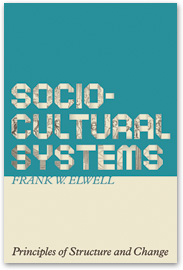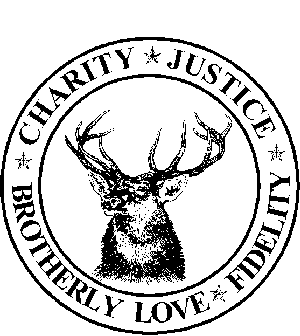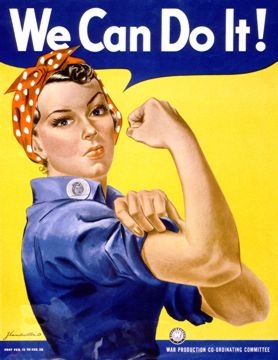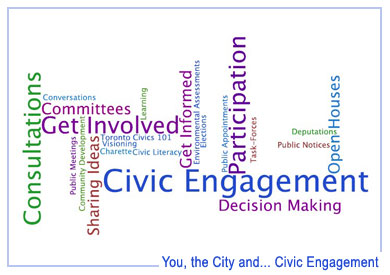
Sociocultural Systems: Principles of Structure and Change Macrosociology: Four Modern Theorists A Commentary on Malthus" 1798 Essay as Social Theory Great Classical Social Theorists In the Classical Tradition: Modern Social Theorists Dr. Elwell's Professional Page
|
rbert Spencer's Evolutionary
Sociology RRobert D. Putnam | |
|
Robert Putnam on the Decline of Communities
By Frank W. Elwell An
excerpt from
Industrializing America:
In a widely commented upon
article "Bowling Alone:
America's Declining Social Capital," Robert
D. Putnam (1995) details and comments upon the decline of community life
in America. Among the items that Putnam cites as evidence of a decline
in social engagement at the local level are:

·
Volunteers for mainline civic organizations have also experienced
significant decline. Volunteers for the Boy Scouts declined by 26
percent since 1970; volunteers for the Red Cross are off by 61 percent
since 1970.
·
Participation in parent-teacher organizations has dropped from more than
12 million in 1964 to about 7 million now.
·
Weekly churchgoing has declined from 48 percent in the late 1950s to
about 41 percent in the early 1970s, and remaining about the same since
then. · Union membership has declined by more than half since the 1950s--representing only 15.8 percent of the work force in 1992.
·
Membership in traditional women's groups has declined steadily since the
mid-1960s. "For example, membership in the national Federation of
Women's Clubs is down by more than half (59 percent) since 1964, while
membership in the League of Women Voters is off 42 percent since 1969"
(p. 5).  · Membership in fraternal organizations have dropped substantially. "Membership is down significantly in the Lions, the Elks (off 18 percent since 1979), the Shriners (off 27 percent since 1979), the Jaycees (off 44 percent since 1979), and the Masons (down 39 percent since 1959)" (p. 5).
·
"The most whimsical yet discomfiting bit of evidence of social
disengagement in contemporary America that I have discovered is this:
more Americans are bowling today than ever before, but bowling in
organized leagues has plummeted in the last decade or so. Between and
1993 the total number of bowlers in America increased by 10 percent,
while league bowling decreased by 40 percent" (P. 5).
·
The General Social Survey (GSS), a national sample survey conducted
times in the last two decades indicates: "Within all educational
categories, total associational membership declined significantly
between 1967 and 1993. Among the college-educated, the average number of
group memberships per person fell from 2.8 to 2.0 (a 26-percent
decline); among high-school graduates, the number fell from to 1.2 (32
percent); and among those with fewer than 12 years of education, the
number fell from 1.4 to 1.1 (25 percent). In other words, at all
educational (and hence social) levels of American society, and counting
all sorts of group memberships, the average number of associational
memberships has fallen by about a fourth over the last quarter-century"
(pp. 6-7).
·
The proportion of Americans who socialize with their neighbors,
according to the GSS, has declined from 72 percent in 1974 to 61 percent
in 1993. This is somewhat offset by a rise in socializing with friends
outside the immediate neighborhood, perhaps reflecting the increasing
importance of social ties in the workplace.
Putnam also comments upon the decline of the extended and nuclear family
(the decline of which is so well known he mentions only in passing)
which he believes reflects the general erosion of connectedness, and may
serve as one of the causes as well. 
In explaining the decline in social connectedness, Putnam calls in all
the usual suspects. First and foremost, he argues, would be women moving
into the outside labor force.
This movement serves to reduce the time and energy of a
significant proportion of the population for social involvement. Here he
notes that this trend, in and of itself, cannot easily explain the
decline in participation by men which has been as significant as that by
women. Male declines cannot be explained with "dishwashing crowded out
the lodge." He correctly
points out that time-budget studies indicate that men are not sharing
household chores and childcare in any significant way (particularly when
women are asked the questions). Perhaps a fuller explanation would
acknowledge that one of the "traditional roles" of women was to organize
the social life of the family--this is yet another role that had to be
compromised because of outside labor force participation--a role that
males, yet again, have not taken up in any significant numbers.
Another possible reason for the decline, Putnam asserts, would be the
hypothesis that geographical mobility disrupts social ties. Here,
however, the evidence is mixed.
Putnam points out that a number of studies have found that
residential stability and home ownership are clearly associated with
greater involvement in the community. But, the evidence also shows,
Putnam reports, that residential stability and home ownership has risen
(modestly) in America since 1965, "and are surely higher now than during
the 1950s, when civic engagement and social connectedness by our
measures was definitely higher" (p. 8). I believe that the hypothesis is
still viable, the problem may well be in our measures of residential
stability. On a subjective level, the tie to a geographical place seems
to be stronger among earlier generations. Perhaps the tie has been
weakened by the cumulative effect of mobility over the last few
generations.
Other demographic factors that Putnam briefly considers include the
recent changes in the American family--divorce, fewer children, and
lower real wages. "Each of these changes might account for some of the
slackening of civic engagement, since married, middle-class parents are
generally more socially
Finally, Putnam speculates that the "technological transformation of
leisure" may also be partly responsible for the decline in social ties.
Recent technological trends in entertainment have served to
individualize tastes--privatizing the way we increasingly spend our
leisure time. Television,
the growth of cable and satellite systems, DVRs, DVDs, video games, and
soon the virtual reality helmets serve to isolate the individual from
the group forms of entertainment of earlier societies.
Other social trends dealt with in this book that are related to the
decline in social engagement and community life would include the rise
of the individualistic ethic,
the investment of more time and energy to work, and more general
technological change such as those in transportation, computer and
cellular phone communication.
The social process that I would identify as being most related to
loss of community, however, is the increasing division of labor or
specialization that prevents us from identifying with each other.
As often stated, Durkheim(1933/1893) posited that the increasing division of labor
weakens the identification of the individual with the group, weakens the
sense of shared values and outlook.
However, like Comte and de Tocqueville before him, Durkheim
recognized that the increasing division of labor caused a greater
reliance on a new bond between individual and society, a bond of
enlightened self-interest.
Because the individual is not sufficient unto himself, it is for society
that he works. Thus is formed a very strong sentiment of the state of
dependence in which he finds himself. He becomes accustomed to
estimating it at its just value, that is to say, in regarding himself as
part of a whole, the organ of an organism. Such sentiments naturally
inspire not only mundane sacrifices which assure the regular development
of daily social life, but even, on occasion, acts of complete
self-renunciation and wholesale abnegation (p. 228).
But suppose this enlightened self-interest is no longer operative?
Robert Reich (1991) makes a compelling case that the recent
globalization of the economy has meant that, at least among the elite,
it is
Add to this erosion the hyper-specialization of individuals, as well as
the sheer size, complexity, and cultural diversity of contemporary
society, and acts of self-sacrifice, of submerging the narrow interest
of the self to community or broader social needs lose their foundations.
Wendell Berry (1977) also comments upon this phenomenon: “Because
by definition they lack any sense of mutuality or wholeness, our
specializations subsist on conflict with one another.
The rule is never to cooperate, but rather to follow one’s own
interest as far as possible.
Checks and balances are all applied externally, by opposition,
never by self-restraint.
Labor, management, the military, the government, etc., never forbear
until their excesses arouse enough opposition to force them to do so.
The good of the whole of Creation, the world and all its creatures
together, is never a consideration because it is never thought of; our
culture now simply lacks the means for thinking of it” (p. 22).
Traditions, sentiments, values and enlightened self-interest previously
bound us together. These ties are loosening, and in their place we have
substituted rational coordination and management of competing
self-interested individuals.
If the decline in civic participation were simply confined to
involvement in local community organizations it would be cause for
serious concern. However, Putnam relates this decline to broader
concerns such as the quality of public life and the performance of
social institutions. "Researchers in such fields as education, urban
poverty, and unemployment, the control of crime and drug abuse, and even
health have discovered that successful outcomes are more likely in
civically engaged communities.
Similarly, research on the varying economic attainments of
different ethnic groups in the United States has demonstrated the
importance of social bonds within each group" (p. 3)
Perhaps the most significant symptom of the decline in civic involvement
is in democratic participation in local, state and national government.
Putnam reports on the well-known decline in voter turnout in national
elections since the 1960s--a decline of nearly 25 percent. Similar
trends occur in state and local elections as well.
Putnam also reports on Roper Organization data from national
samples over the last two decades that reveal that Americans who
attended public meetings on town or school affairs 'in the past year'
has fallen from 22 percent in 1973 to 13 percent in 1993.
"Similar (or even greater) relative declines are evident in
responses to questions about attending a political rally or speech,
serving on a committee of so
Putnam does note one significant "countertrend" in the form of new
mass-membership political organizations.
Groups like the Sierra Club, the National Organization for Women
(NOW), and the American Association of Retired Persons (AARP) have grown
exponentially during the 1970s and 1980s.
While Putnam believes these groups are obviously of "great
political importance" they are of a different character than the
community organizations of the past.
"For the vast majority of their members, the only act of
membership consists in writing a check for dues or perhaps occasionally
reading a newsletter. Few ever attend any meetings of such
organizations, and most are unlikely ever (knowingly) to encounter any
other member. The bond
between two members of the Sierra Club is less like the bond between any
two members of a gardening club and more like the bond between any two
Red Sox fans (or perhaps any two devoted Honda owners): they root for
the same team and they share some of the same interests, but they are
unaware of each other's existence" (p. 6).
[End of Excerpt] References: Berry, Wendell. 1977. The Unsettling of America.
San Francisco: Sierra Club.
Durkheim, David Emile. 1933 [1893] The Division of Labor in Society.
Translated by George Simpson. New York: The Free Press. Putnam, Robert D. 1995. "Bowling Alone: America's
Declining Social Capital," Current 373 (June): 3-9.
©2005 Frank Elwell, Send comments to [email protected]
|
 involved than other people" (p. 8). Other
changes, Putnam speculates, might include the changes in scale that have
swept over the American economy in the last few decades.
involved than other people" (p. 8). Other
changes, Putnam speculates, might include the changes in scale that have
swept over the American economy in the last few decades. no longer necessary for the society as a whole to do well for the
elite to prosper.
no longer necessary for the society as a whole to do well for the
elite to prosper. . Scholars of the
new democracies in the post-communist world, Putnam points out, have
lamented the absence of traditions of civic involvement and the
widespread passive reliance on the state to provide services. Putnam
also concludes from his own study of governments in different regions of
Italy that the performance of representative government varied by local
norms of civic commitment. "Voter turnout, newspaper readership,
membership in choral societies and football clubs--these were the
hallmarks of a successful region.
. Scholars of the
new democracies in the post-communist world, Putnam points out, have
lamented the absence of traditions of civic involvement and the
widespread passive reliance on the state to provide services. Putnam
also concludes from his own study of governments in different regions of
Italy that the performance of representative government varied by local
norms of civic commitment. "Voter turnout, newspaper readership,
membership in choral societies and football clubs--these were the
hallmarks of a successful region.